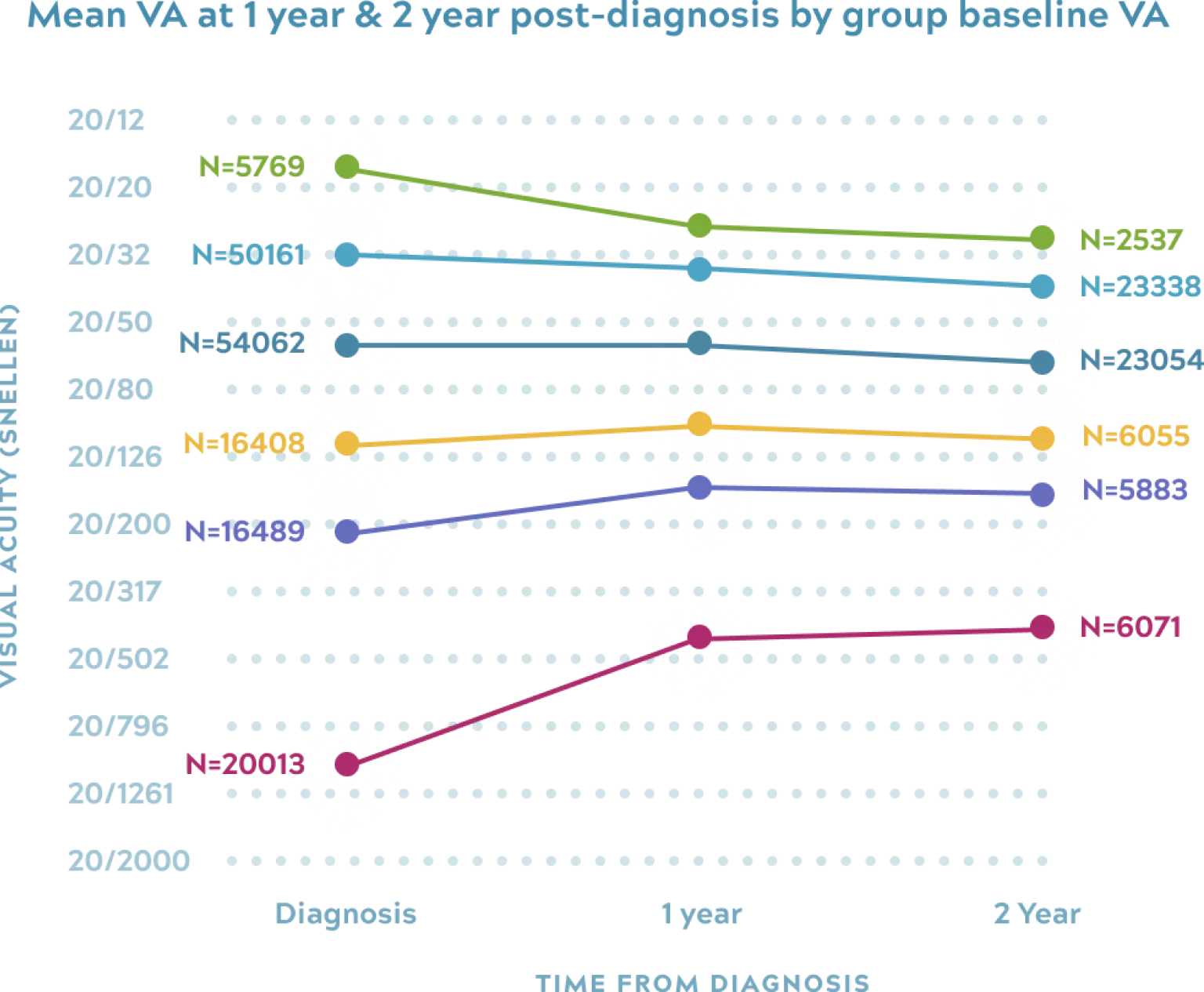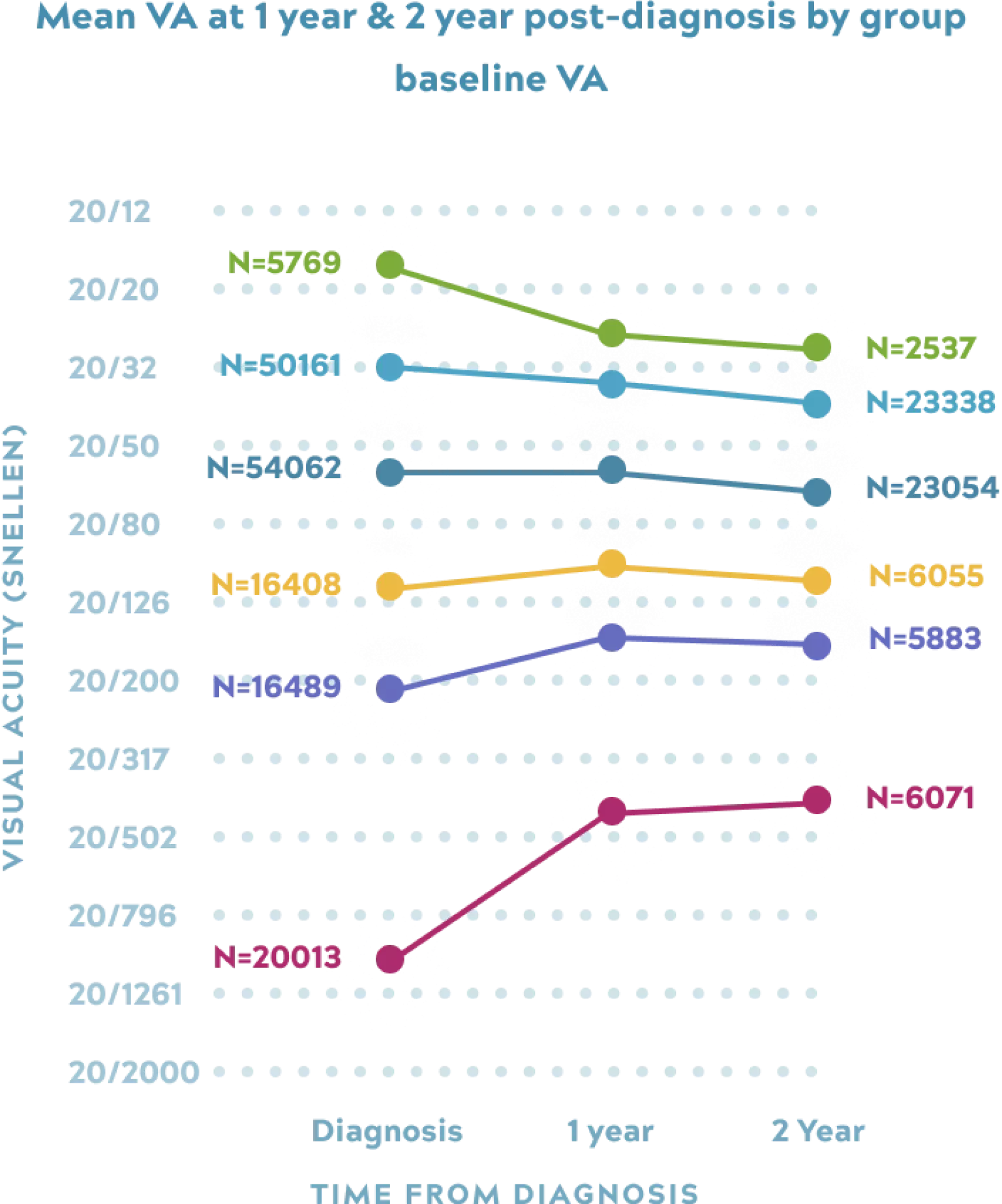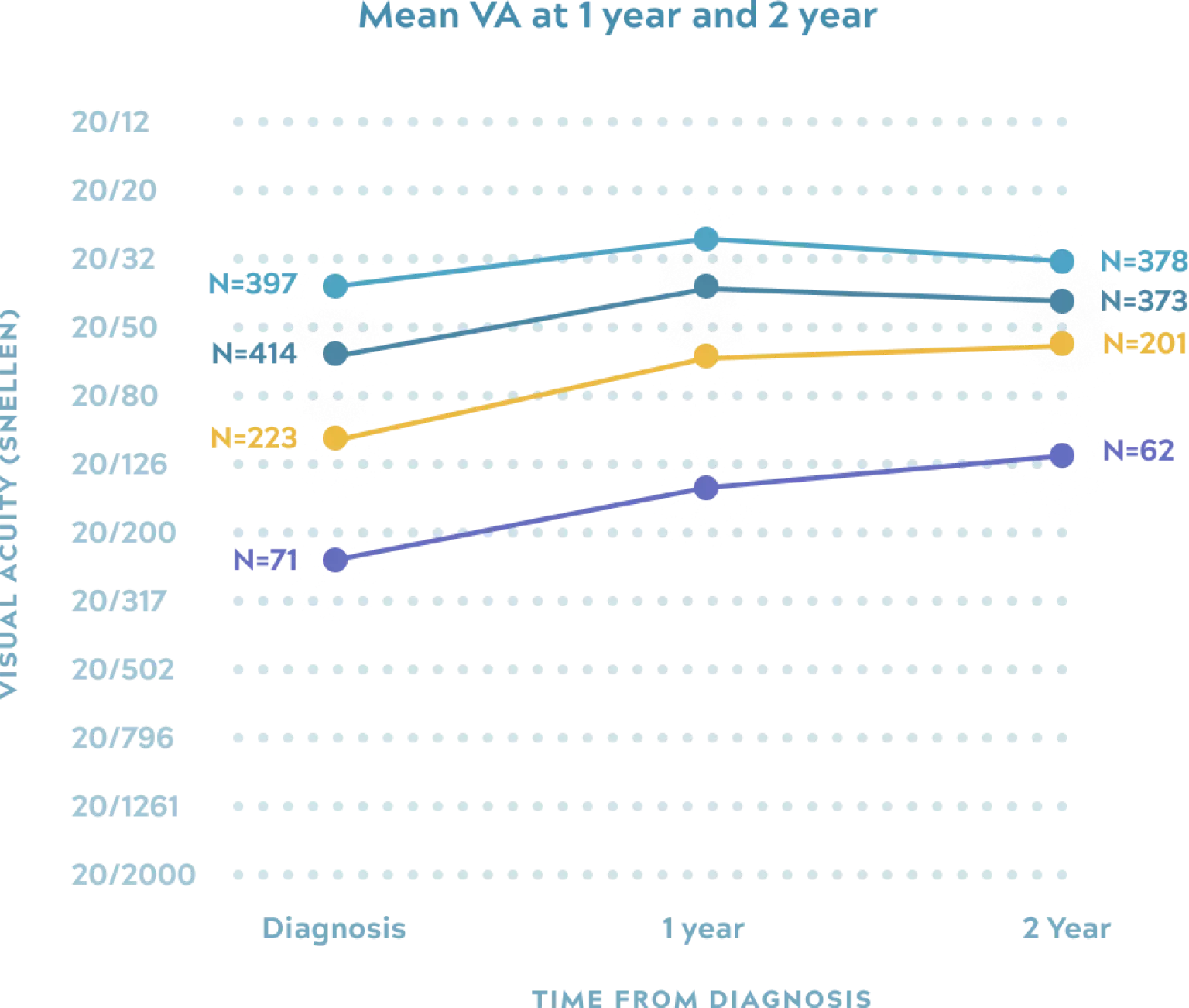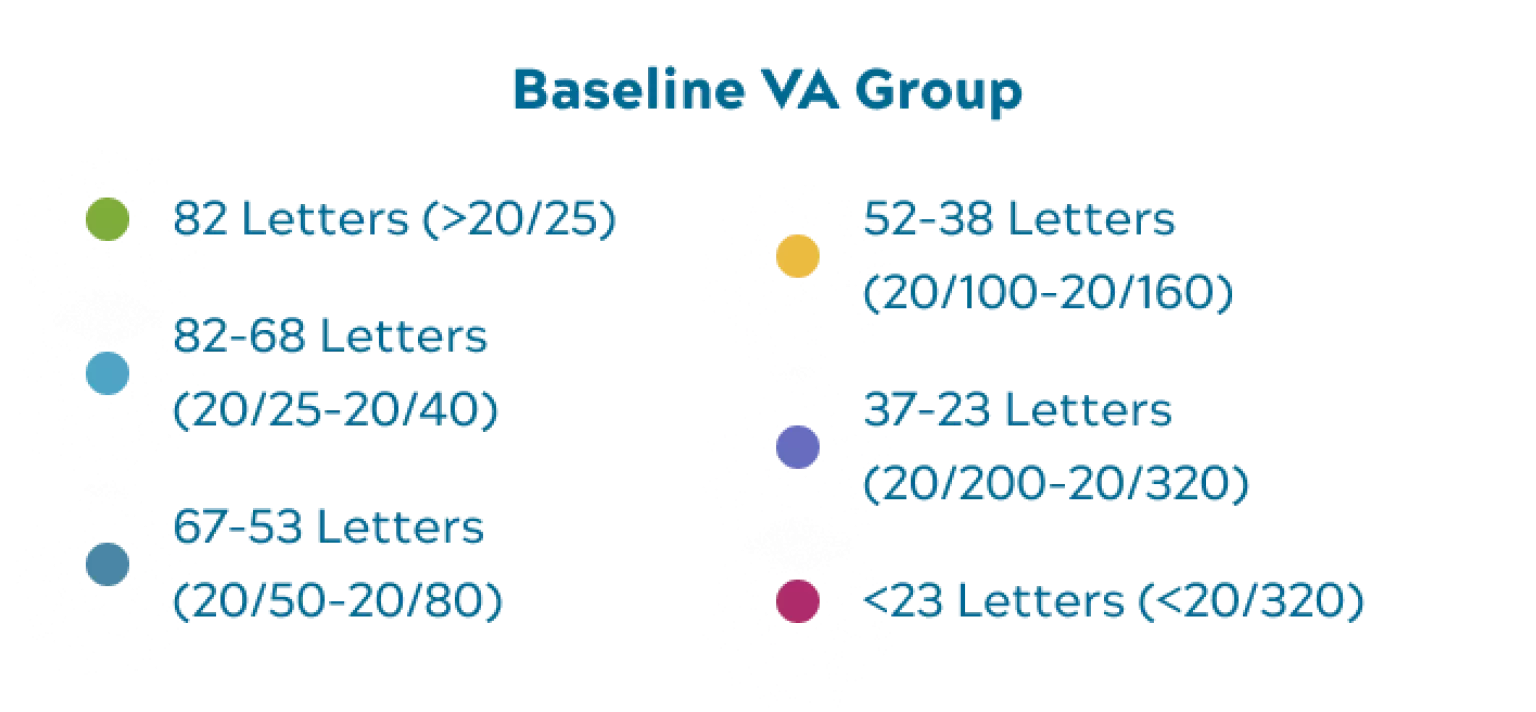Saving Functional Vision Requires Early Detection
Real-world and clinical trial data prove that early wet AMD diagnosis with good visual acuity is essential in preserving long-term functional vision (20/40 or better) with treatment
- On average, the better the visual acuity (VA) is at the time of treatment initiation, the higher the likelihood for functional vision to be maintained for at least the following 2 years2,4
- Lesions at the onset of wet AMD grow more quickly, resulting in more rapid vision loss than later stage lesions5
- Vision is better preserved when anti-VEGF therapy is initiated while wet AMD lesions are small, and VA has not yet deteriorated
Not Enough Eyes are Detected Early Enough to Save Functional Vision
IRIS® Registry real-world data confirms what multiple clinical trials have shown: not enough patients are detected with good visual acuity (VA) at treatment initiation.
The percentage of first and second eyes diagnosed with wet AMD when visual acuity is 20/40 or better is low. Even with closer in-office monitoring while one eye is being treated, the data reveals that out of 60,618 fellow eyes the average VA was 20/79 at the time of diagnosis.2
- Only 34% of eyes had a VA of 20/40 or better at treatment initiation and only 36% of fellow eyes had a VA of 20/40 or better at treatment initiation2
- Eyes can convert at any time between office visits and be left untreated for weeks, or even months dependent on the patients’ treatment interval
- For the majority of patients, vision loss is irreversible by the time wet AMD is detected using current care models
Eye(s) ≥ 20/40 at Wet AMD Diagnosis
Eyes that convert to wet AMD lose a substantial amount of vision before diagnosis and treatment
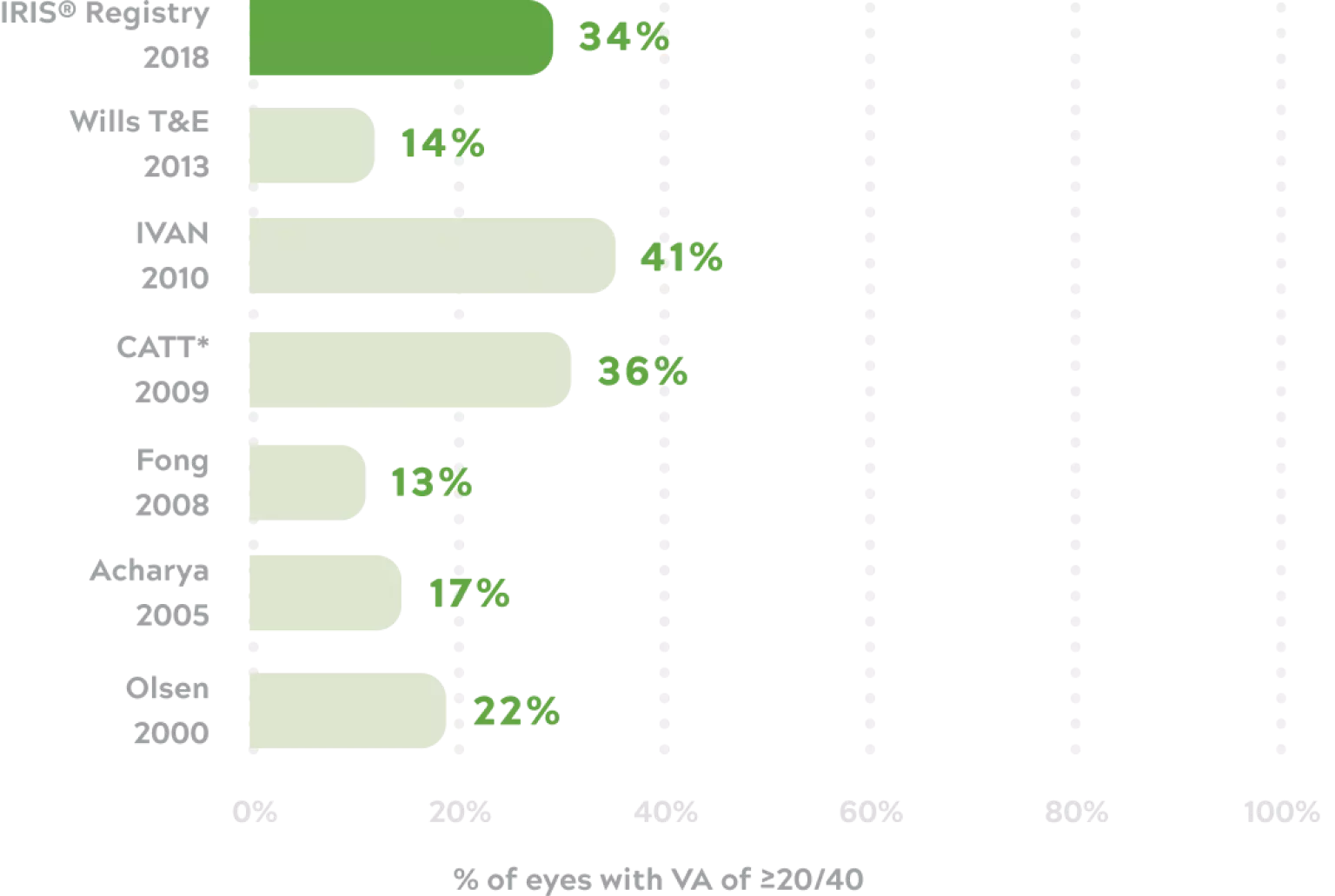
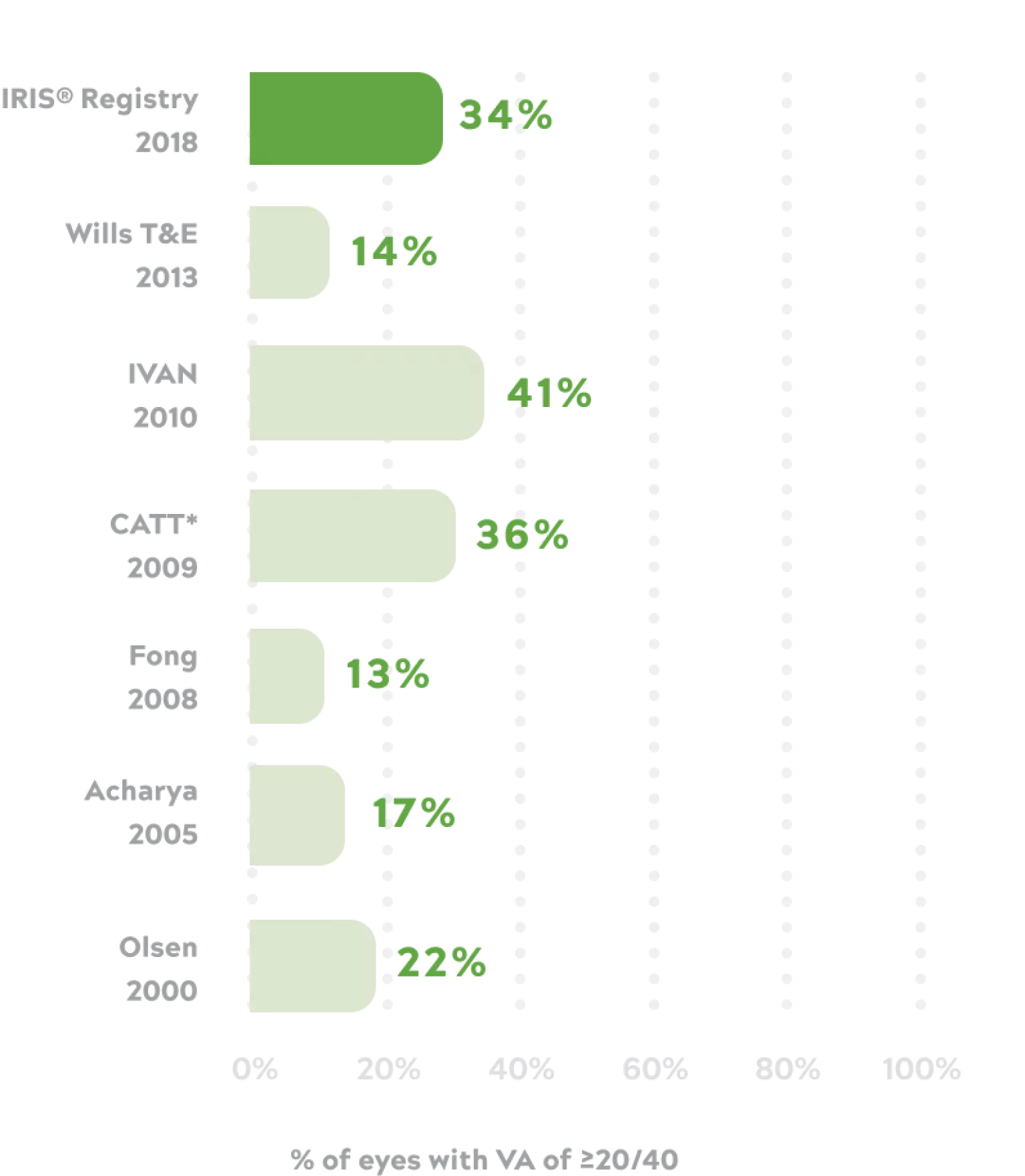
Not enough diagnosed wet AMD eyes are detected early
Real-world and clinical trial data show a small proportion of patients with good VA at initiation of anti-VEGF therapy in both first and second eyes.
*All but CATT included eyes with VA of 20/20 or worse (CATT included ≤20/25)
Help Patients Maintain Functional Vision
Adding the AI-enabled ForeseeHome monitoring service to your standard of care helps you diagnose wet AMD earlier, while your patients still have their functional vision (20/40 or better).
The ALOFT Study followed 2,123 dry AMD patients, from 5 retina specialist practices over a 10-year period.
Excellent testing compliance rate of 5.2 times per week
20/39 average VA at conversion
84% of patients maintained a 20/40 or better VA for years after treatment initiation
Real-world performance of ForeseeHome, which included analysis of 3.2 million tests, resembles pivotal AREDS2 HOME study results.
This real-world data analysis confirms that the use of ForeseeHome provides a significant benefit to patients as a means of increasing the early detection of wet AMD. Earlier detection of wet AMD with this FDA cleared device is a strong predictor of better vision over time with current anti-VEGF therapy.

